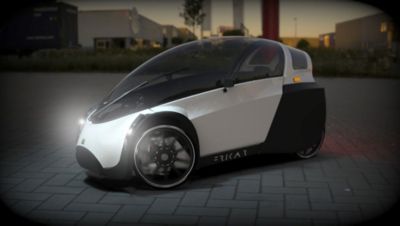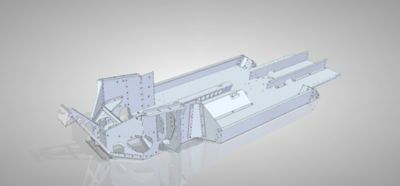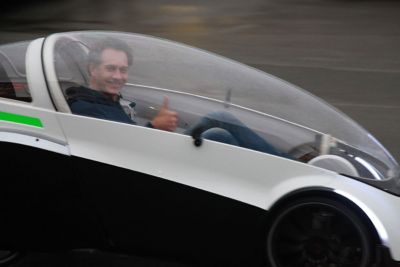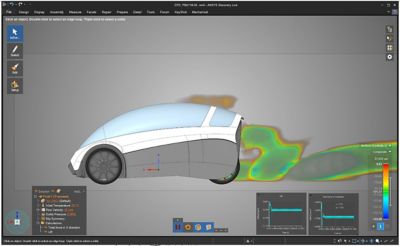-
-
Kostenlose Software für Studierende
Ansys unterstützt die nächste Generation von Ingenieur*innen
Studenten erhalten kostenlosen Zugang zu erstklassiger Simulationssoftware.
-
Verbinden Sie sich jetzt mit Ansys!
Gestalten Sie Ihre Zukunft
Stellen Sie eine Verbindung mit Ansys her, um zu erfahren, wie Simulation Ihren nächsten Durchbruch vorantreiben kann.
Länder und Regionen
Kostenlose Demoversionen
Produkte & Dienstleistungen
Lernportal
Über das Unternehmen
Back
Produkte & Dienstleistungen
Back
Lernportal
Ansys unterstützt die nächste Generation von Ingenieur*innen
Studenten erhalten kostenlosen Zugang zu erstklassiger Simulationssoftware.
Back
Über das Unternehmen
Gestalten Sie Ihre Zukunft
Stellen Sie eine Verbindung mit Ansys her, um zu erfahren, wie Simulation Ihren nächsten Durchbruch vorantreiben kann.
Kostenlose Demoversionen
ANSYS BLOG
June 18, 2021
Cool, Compact and Comfortable: Podbike FRIKAR Redefines the Velomobile

The idea for the Podbike FRIKAR e-bike began, quite literally, with a bang.
Podbike founder and product developer Per Hassel Sørensen was riding a conventional two-wheeled bike along the streets of Sandnes, Norway, when he had what he described as a “kinetic exchange with a car at three meters per second.”
In other words, he was involved in a low-speed collision.
But at any speed, a bike is no match for a car in a crash. The accident nearly broke his neck. It also left him with a steel rod in his leg and a fear of bike riding in mixed traffic.
Rather than retreat to a life of car-driving — particularly unlikely given that Sørensen is an inveterate cyclist with a master’s degree in sustainable energy — he spent the next six years using a kit-built, three-wheel (and slightly souped-up) velomobile as his daily mode of transportation. But in the back of his mind, he knew he could come up with something better.
Velomobiles are electric-assisted bicycle-cars especially valued in Europe’s bike culture where they provide transportation and exercise yet use little energy. They have limitations, though, especially in Nordic weather, where the lack of a roof or windshield exposes riders to the elements.
That was just one of the issues Sørensen set out to overcome by developing a different kind of e-bike from the ground up.
The final product would be safer than conventional velomobiles, easy to spot on crowded roads, provide year-round comfort and have mass market appeal.

Screenshot of CAD model production version of the FRIKAR structural platform, jointed using structural adhesives and speed fastener.

Ansys Mechanical structural fatigue simulation of the front of the chassis.
Using Ansys Discovery, Ansys Mechanical and Ansys Fluent, Sørensen and his four-person team developed the Podbike FRIKAR, a fully encapsulated, energy-efficient, all-weather, four-wheel e-bike. The FRIKAR is lightweight yet strong, “acting as a cocoon,” Sørensen said, to protect the rider (and any youngster in the optional child seat). Electric assist gives the rider more pedal power but doesn’t propel the vehicle on its own.
Ansys provided both simulation software products through the Ansys Startup Program, which helps promising new companies who have limited funding for product development.
“It’s a struggle to fund a new business in the beginning,” Sørensen said. “Ansys enabled us to use first-class software at a discount. That was a huge help.”
Designing a Velomobile with Outsized Performance
Designing the aerodynamic body of the FRIKAR e-bike meant balancing cost and ease of assembly with strength and safety — not only did the vehicle need to be safe, the rider needed to feel safe inside.
The Podbike FRIKAR takes velomobile safety to a new level.
With four wheels instead of three, the FRIKAR is more stable than traditional velobikes, especially when cornering. Protective zones absorb and distribute impact energy in case of collision. In fact, the FRIKAR is designed to bounce off any slow-moving or stationary object it contacts.
Yet to make it truly appealing to riders, the FRIKAR also had to be stylish.
Some might even call it cool, which was what Sørensen was going for.
A typical velomobile resembles a three-wheeled go-kart or kiddie carnival ride. It’s topless and has a Flintstone-like opening underneath the pedals. But the weather-proof Podbike FRIKAR is completely enclosed — canopy, sides and bottom —and has the streamlined good looks of a jet cockpit, only in compact form.

A Podbike R&D team member takes a prototype out for a spin in the rain.
At 7.5 feet long and 2.75 feet wide, it’s about the same size as a bike trailer. And though its low profile is meant to help prevent rollovers, the FRIKAR is actually taller than a Lamborghini Countach or Miura. As far as human scale, the FRIKAR seats one adult with room to spare. There’s also a cargo area ample enough for groceries, camping gear or a couple of dogs.
With its sleek styling, the FRIKAR looks like it’s built for speed and, at least in the e-bike world, it is. It’s built on a recumbent chassis with motors in the two back wheels and a pedal generator in each of the front wheels. Top speed with electric assist is 15.5 mph. Any faster, and it would no longer qualify as an e-bike in the EU. That would keep it from traveling in dedicated bike lanes and would also require a driver’s license and registration to operate.
The FRIKAR is also built for distance. The chassis can accommodate multiple traction batteries — they provide the power — with an electric range of 37 to 55 miles each. The batteries also provide electric assist, which improves pedal power without actually propelling the e-bike on its own, helping the rider go farther while expending less energy.
An Air of Comfort
Not every rider uses electric assistance, of course. To allow pedaling without it, design considerations included how to restrain the FRIKAR’s overall weight (the current model is 198 pounds).
Although carbon fiber would have substantially reduced the FRIKAR’s weight, it didn’t meet Podbike’s green requirements. Because the material can’t be recycled or reused, it was taken out of the running.
The team ultimately chose a more environmentally friendly, corrosion-resistant aluminum alloy plus stainless steel for parts subjected to higher fatigue cycles. Using Mechanical to model material fatigue, load and vibration helped the team understand how the FRIKAR would perform under different operating conditions, including bumpy roads. It also provided insight into the e-bike’s response to impact.

Velocity graph showing air velocity streamers at 10 m/s and the convergence of drag and lift calculations
Ansys CFD turbulence models enabled drag calculations that provided what Sørensen called “a hint” of what the e-bike’s shape should be. To reduce drag as much as practically possible, the Podbike team refined the body geometry over multiple iterations.
Sørensen also used Ansys CFD to perform thermal simulation and calculate air velocity for interior ventilation — making the FRIKAR cool in an entirely different sense.
“As with any pedal-powered device, the rider generates heat that has to be dispersed,” Sørensen said. “However, because a FRIKAR rider is fully enclosed, there’s no automatic cooling from moving air, making air flow via blowers and ventilation ports a key design challenge.”
Without sufficient cooling mechanisms, extreme exertion could cause overheating or force the rider to slow down. Calculating total heat load on ventilation also had to account for some other small heat sources, including headlights and even the rider’s moist breath that could fog up the window.

The turbulence from the abrupt end of vehicle illustrates the compromise between low drag and practical features.
Getting Up to Speed with Simulation
While the inspiration for the Podbike FRIKAR started with an accident, every step Sørensen and his small team have made to bring it to limited production has been deliberate and well-considered. That includes using Ansys simulation to guide important design decisions. In fact, Sorensen said that without simulation, it would have been difficult to get this far.
“Given the complex geometries involved, especially regarding fatigue, it would be too time consuming and costly to do a lot of lab tests and prototypes,” he said. “You need numeric simulation to be able to make a product like the FRIKAR. It’s not doable without it, at least within a reasonable timescale and budget.”
To learn more about the Ansys Startup Program visit ansys.com/startups.
Podbike, the Podbike logo and FRIKAR are trademarks of Podbike AS, registered in Norway and other countries. Used with permission.